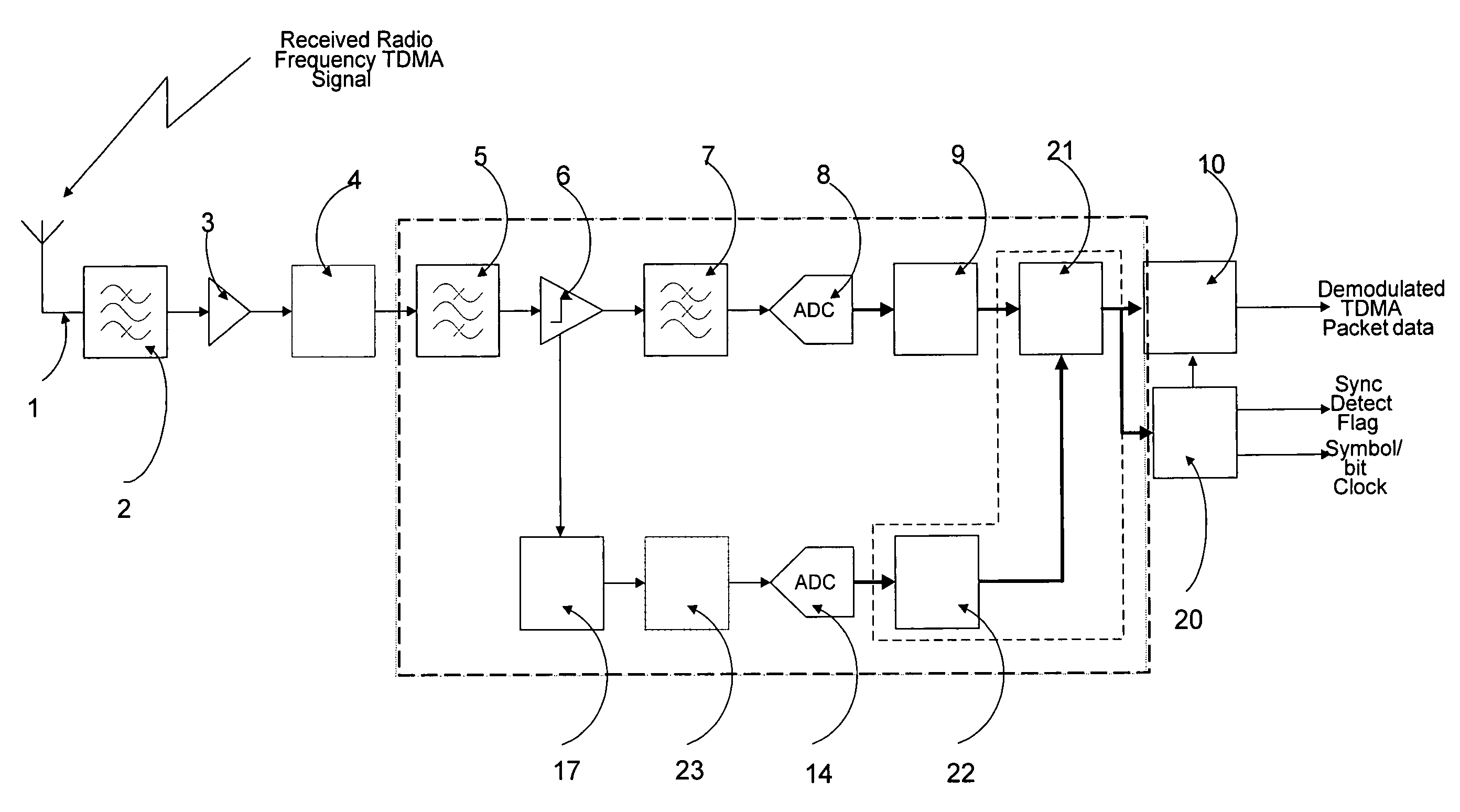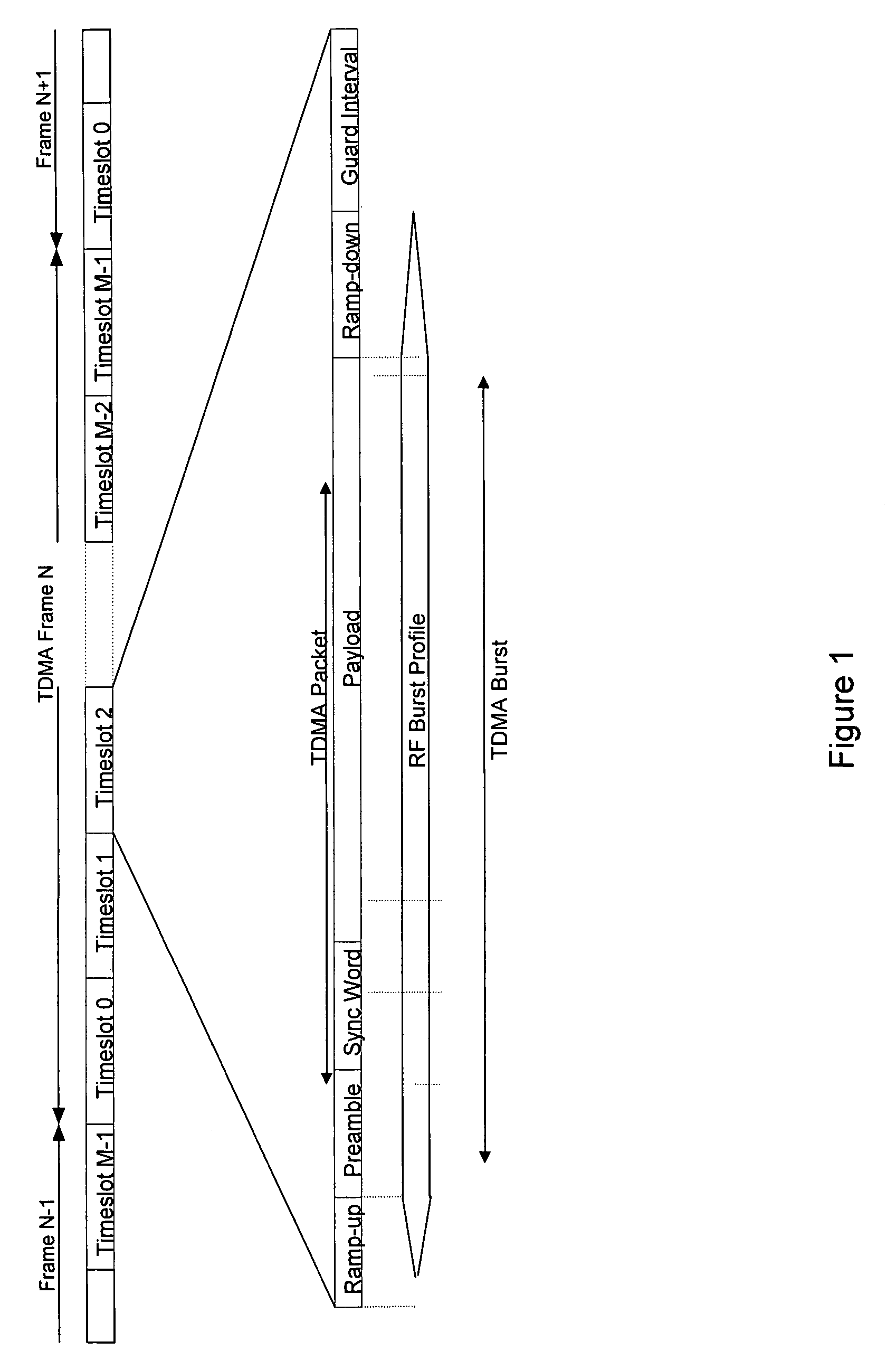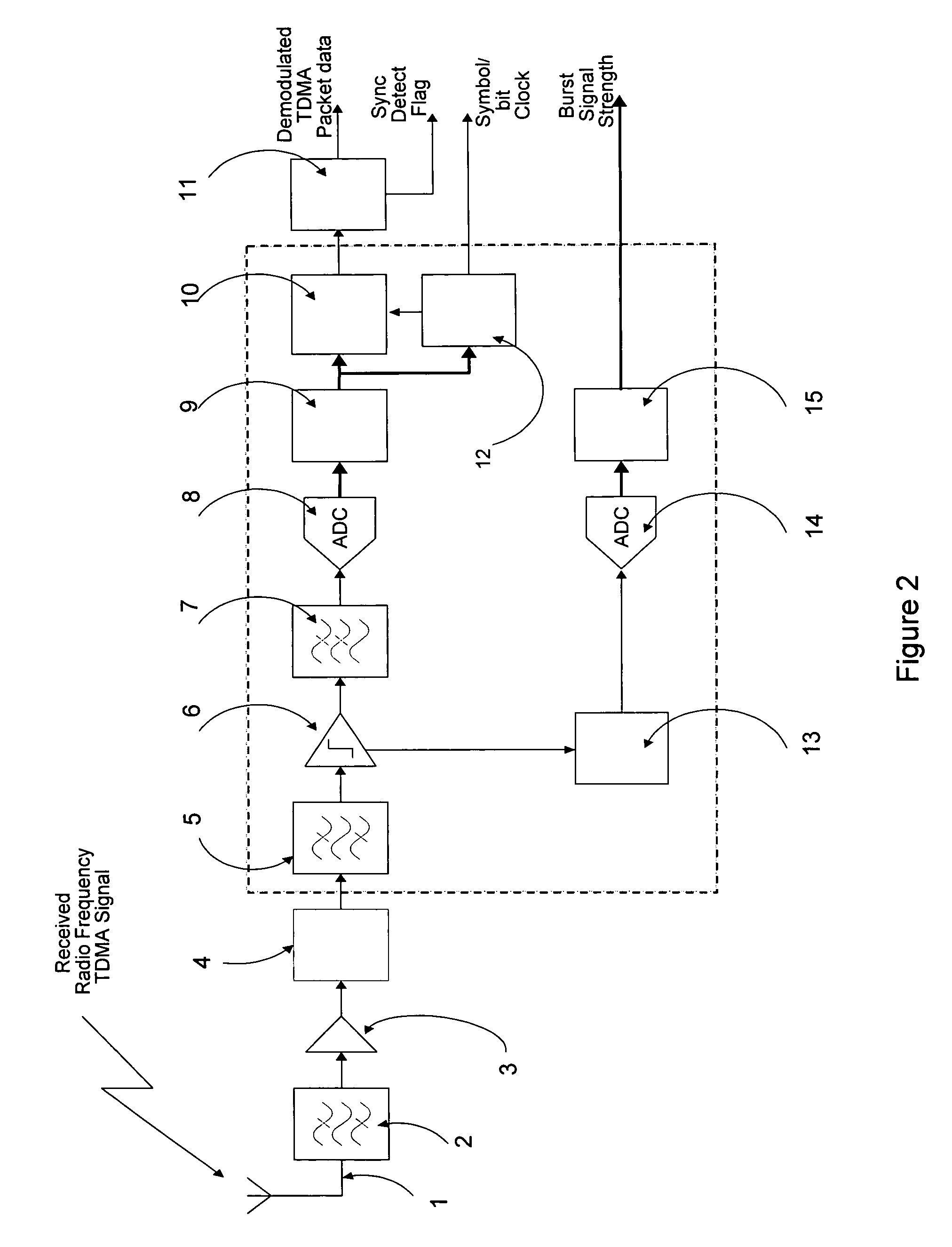Demodulation with separate branches for phase and amplitude
a phase and amplitude branch technology, applied in the field of digitally modulated tdma radio signal reception, can solve the problems of reducing receiver sensitivity, difficult to overcome without compromising equalisation performance, and non-coherent detection methods are inherently more noisy than their coherent counterparts
- Summary
- Abstract
- Description
- Claims
- Application Information
AI Technical Summary
Benefits of technology
Problems solved by technology
Method used
Image
Examples
first embodiment
[0080]FIG. 6 shows a receiver in accordance with the present invention. The salient features of this new architecture will now be described in detail.
[0081]A radio frequency TDMA signal is received by antenna 1 which is connected to the chain of filters 2 / 5 / 7, amplifiers 3 / 6 and down-conversion stages 4 which comprise the analogue section of the receiver and which correspond to the like-numbered parts of FIGS. 2 and 3. The pain of amplifier chain 6 is set such that on receipt of a suitably modulated signal, at any arbitrary level within the dynamic range of the radio receiver, the output is driven into saturation (hard-limited) and stripped of its amplitude variations. Accordingly, at the output of amplifier 6 the signal approximates a variable duty cycle square-wave whose absolute phase is defined implicitly by the timings of its high-to-low and low-to-high transitions. Interpolation filter 7 performs time-to-voltage conversion from transitions applied at its input and in so doing ...
second embodiment
[0085]The Envelope Extractor 22 numerically processes the samples from the Amplitude sequence to derive a new sequence of what are hereafter referred to as Envelope Coefficients. This will be described in detail below, after an outline of the second embodiment has been given.
[0086]FIG. 7 shows a receiver in accordance with the second embodiment of the present invention. The salient features of this new architecture will now be described in detail.
[0087]The analogue section of the receiver is similar to that described previously in FIG. 3. The limiting amplifier block c8 produces a constant-envelope. ‘Phase’ signal component at the output of interpolation filter c9 together with an ‘Amplitude’ signal component at the output of the signal strength detector c15 which has a response time commensurate with channel bandwidth thereby allowing symbol-rate variations in the received signal amplitude to be followed. In known receiver systems, such as depicted in FIGS. 2 and 3, this Amplitude ...
PUM
 Login to View More
Login to View More Abstract
Description
Claims
Application Information
 Login to View More
Login to View More - R&D
- Intellectual Property
- Life Sciences
- Materials
- Tech Scout
- Unparalleled Data Quality
- Higher Quality Content
- 60% Fewer Hallucinations
Browse by: Latest US Patents, China's latest patents, Technical Efficacy Thesaurus, Application Domain, Technology Topic, Popular Technical Reports.
© 2025 PatSnap. All rights reserved.Legal|Privacy policy|Modern Slavery Act Transparency Statement|Sitemap|About US| Contact US: help@patsnap.com



